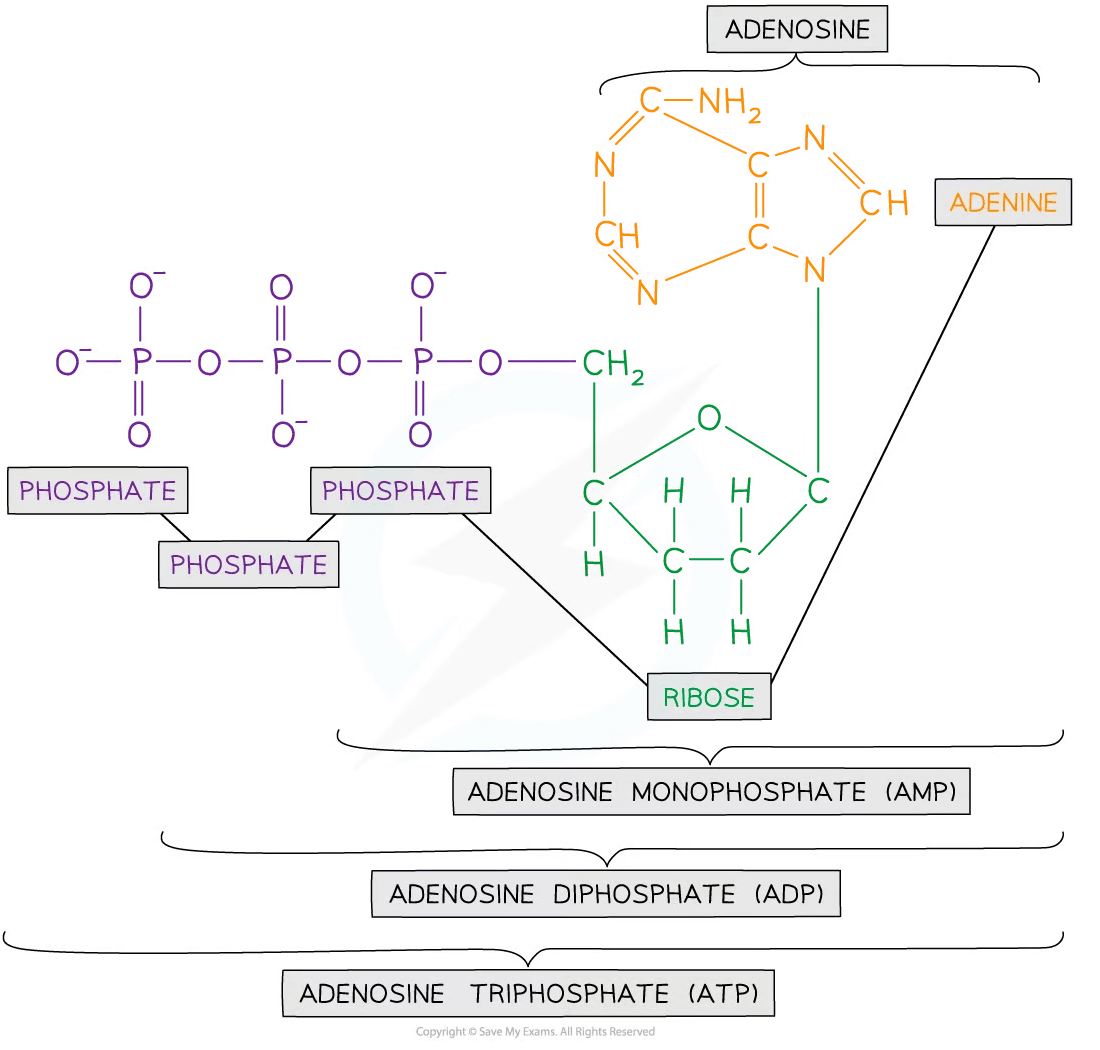ATP
What is ATP?
- ATP is a source of energy for cellular processes
- The energy can be released immediately, exactly when and where it is required
- All organisms require a constant supply of energy to maintain their cells and stay alive
- In all known forms of life, ATP from respiration is used to transfer energy in all energy-requiring processes in cells such as:
- In anabolic reactions – synthesizing larger molecules from smaller molecules
- To move molecules across the cell membrane (active transport)
- To move substances and organelles within the cell
- In animals, energy is also required:
- For muscle contraction – to coordinate movement at the whole-organism level
- In the conduction of nerve impulses, as well as many other cellular processes
- Organisms require a constant supply of ATP because much of the energy is dissipated (lost to the surroundings) as heat
- There are many features of ATP which make it useful within living system:
Features of ATP Table
| Feature | Benefit |
| Releases a small but sufficient quantity of energy | This is enough energy to drive important metabolic reactions while keeping energy wastage low |
| Exists as a stable molecule | It doesn't break down unless a catalyst (ATPase) is present so energy won't be wasted |
| Can be recycled | The breakdown of ATP is a reversible reaction, ATP can be reformed from ADP and Pi. This means the same molecule can be reused elsewhere in the cell for different reactions |
| Hydrolysis is quick and easy | Allows cells to respond to a sudden increase in energy demand |
| Soluble and moves easily within cells | Can transport energy to different areas of the cell |
| Forms phosphorylated intermediates | This can make metabolites more reactive and lower the activation energy required for a reaction |
Structure of ATP
- ATP is a phosphorylated nucleotide
- It is made up of:
- Ribose sugar
- Adenine base
- Three phosphate groups
ATP Structure Diagram

The structure of ATP contains a ribose sugar, an adenine base and three phosphate groups
Cycling of ATP
- ATP is hydrolyzed to ADP and phosphate when releasing its energy
- ADP and phosphate can then be re-converted to ATP during respiration, by dehydration synthesis

Hydrolysis of ATP
- When ATP is hydrolyzed (broken down), ADP and phosphate are produced
- ATPase is the enzyme responsible for catalysis of this reaction
- As ADP forms, free energy is released that can be used for processes within a cell eg. DNA synthesis
- Removal of one phosphate group from ATP releases approximately 30.5 kJ mol -1 of energy, forming ADP
- Removal of a second phosphate group from ADP also releases approximately 30.5 kJ mol-1 of energy, forming AMP
- Removal of the third and final phosphate group from AMP releases 14.2 kJ mol-1 of energy, forming adenosine
Hydrolysis of ATP Diagram

The hydrolysis of ATP
ATP Synthesis
- Organisms cannot build up large stores of ATP and it rarely passes through the cell surface membrane
- This means ATP must be made in every cell, as and when needed
- ATP is formed when ADP is combined with an inorganic phosphate (Pi) group
- This is an energy-requiring reaction catalyzed by ATP synthase
- Water is released as a waste product (therefore ATP synthesis is a dehydration synthesis reaction)
Exam Tip
Be careful not to use the terms energy and ATP interchangeably. Energy is the capacity or power to do work while ATP is a molecule which carries the energy (in chemical form) to places in the cell that need it in order to do work.
Note you do not need to learn the chemical structure of ATP, or the exact quantity of energy in kilojoules that are involved with the interconversions between ATP and ADP, but you should appreciate that it is sufficient for performing tasks within the cell

